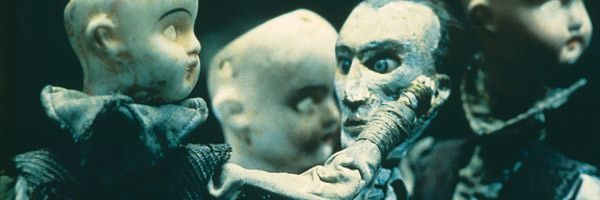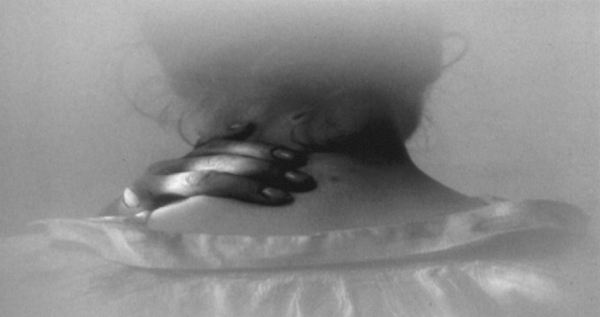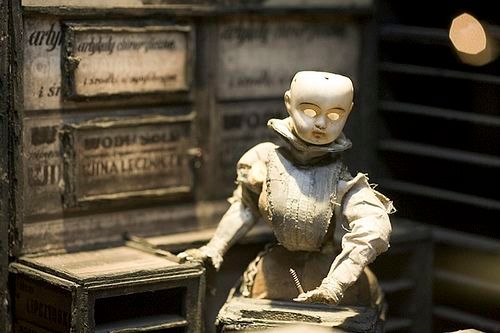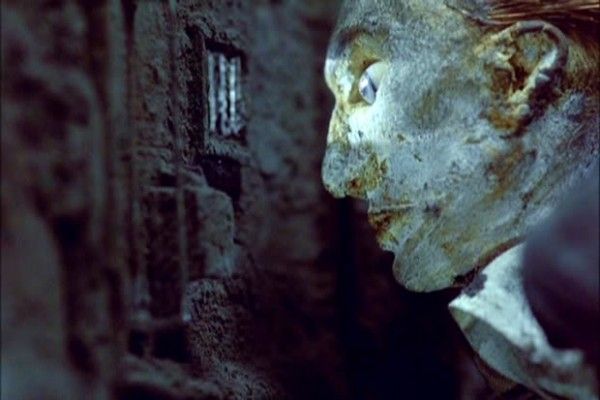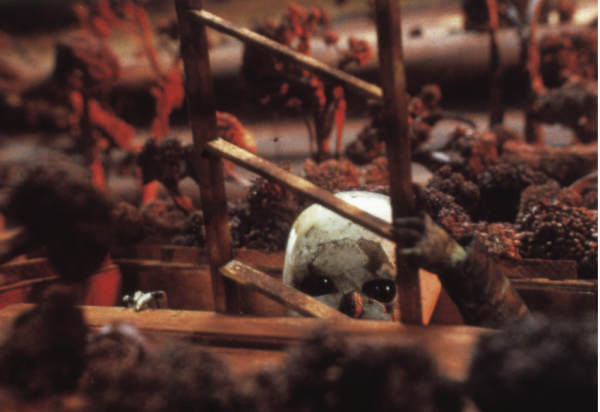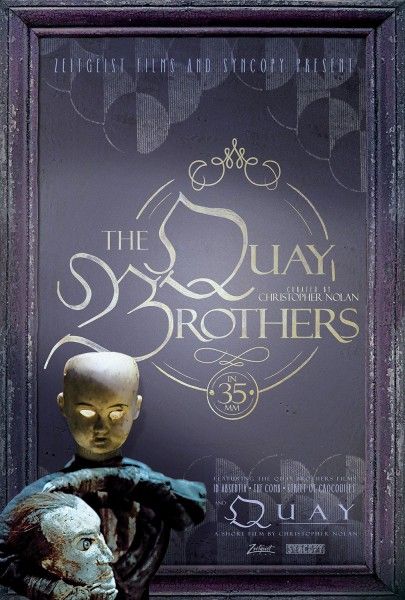It’s challenging to understand, or even penetrate, the world of the Quay Brothers, the filmmaker and animator duo of identical twins Stephen and Timothy Quay. Their signature is marked by the use of eerie puppets, an even eerier soundtrack, and surreal visuals brought to life by the magic of stop-motion animation. It may bring to mind the animation works of Tim Burton (though far less family-friendly), with touches of Salvador Dali, M.C. Escher, and a psychotic Dr. Seuss.
The Quay Brothers have been making films since the late ‘70s, garnering a cult following in the art-house circles, but they’re entering our cinematic conscience again, while being introduced to a new audience, thanks to a retrospective tour curated by one of the most popular directors working today: the one and only Christopher Nolan.
The 11-city tour boasts four films in the program, titled The Quay Brothers in 35mm, including three Quay Brothers shorts—In Absentia (2000), The Comb (1991), and the stellar Street of Crocodiles (1986)—as well as a Nolan-directed documentary short called Quay that gives us a behind-the-scenes look at the kooky fraternal duo and their meticulous work process. All films are presented in 35mm.
“We don’t emulate what’s outside our window,” says one of the Quay twins in Nolan’s short but informative doc. It’s true; their worlds don’t coincide much with reality. In Absentia, the first piece of the presentation, is quick to inform us that the Quay universe is otherworldly and dreamlike—or, in this specific instance, much more like a nightmare. Using the contrasts of light and shadows (something of a Quay trademark) and insanely dramatic close-ups and sound effects, In Absentia—as with most Quay films—makes the most extraordinary out of the most ordinary (like pencils being sharpened and the shavings falling to the ground). In a film where nothing much happens, and even less is comprehensible, the Quays have managed to make a short more terrifying than most feature-length horrors.
A lot of that has to do with the manic scribbling of a woman—the one who keeps sharpening, and breaking, pencils—and indecipherable, demonic whisperings reminiscent of the ones heard in Rodney Ascher’s sleep paralysis documentary, The Nightmare (2015). Most of all it's our inability to comprehend that's frightening. At the end of the film, it's revealed that it's dedicated to a woman who, for years, obsessively wrote letters to her husband from an asylum. It’s a clue to what In Absentia is about, but a reading of a Quay film is never that simple, or literal.
It’s easy to see why Nolan would put In Absentia as the opener. It's the most haunting of the bunch. After that introductory shock, we see Nolan in the director’s chair—and, let's be real, in the shoes of a fanboy so often occupied by those in Nolan's presence. With his 12-minute short, Quay, we get a better understanding of his long-time appreciate of the Quays (in a New York Times piece, he writes that he has been a fan since his late teens). On one hand, the Quays—now 68—are two grown men who like to play with dolls. But in Quay, we see them through the doting, olive-oil lens of Nolan: The Quay Brothers are masters of their art. Ah, yes the olive oil—it’s a technique the Quays use to add a life-like gloss to their dolls’ eyes, and sometimes even to their teeth, for that salivating effect. Love or hate the Quay films, but it’s impossible to argue that their attention to detail isn’t remarkable. After all, it’s that kind of attention, as well as grueling patience, that’s required to pull off the stop-motion work they do.
The Quay Brothers in 35mm kicked off at New York’s Film Forum on Wednesday, Aug. 19, with a Q&A following the screenings. “You guys are a great inspiration for myself and for other filmmakers,” Nolan told Timothy and Stephen Quay during the Q&A session, which he led as interviewer. It’s not immediately clear how the Quays’ chilling puppet work may have influenced the filmmaker behind the Batman movies and Interstellar (2014). The connections are as abstract as the Quay films themselves, but they’re there: from the Escher-like puzzle-within-a-puzzle aesthetic of The Comb that can be found in films like Memento (2000) and Inception (2010), to the cartoonish fight sequences of Nolan’s action films, to the dimly lit, bluish hue or Crocodiles that colors The Dark Knight (2008). In The New York Times interview, Nolan calls on The Prestige (2006). “That’s the film of mine very specifically where your films had a tremendous influence,” he says to the Quays, but again, the ties are more abstract than concrete.
For the Quays, inspiration comes from Eastern Europe—the art, the literature, the classical music—where they lived for many years. Currently residing in London, their American accents, brought from their hometown of Norristown, Penn., is tinted with a vague European flair.
At Wednesday night's Q&A, Nolan got to sit in a seat he's not familiar with; he's usually the one whose brain people pick. The Quays, coy about revealing their methods—mostly concerned that other animators will find theirs amateur—were equally flustered about talking about their inspirations, stating, simply, that they looked at the objects lying around them. They say this with modesty, but it takes a certain genius to look at something so mundane as a pencil and transform it into the most unsettling object, as they do in In Absentia.
The Quays ask for a complete suspension of disbelief before entering their world. 1991’s The Comb, a fairytale adaptation, marks the third film of the program, and is the most colorful of the Quays on display, including a forest setting that aesthetically tips a hat to Dali. But the best of the program is saved for the last, the one most frequently heralded as the Quays’ best: Street of Crocodiles (1986), based on a short story by Bruno Schulz. The animation is the most ambitious in this 20-minute short, which follows a puppet that explores his surroundings, before he is taken apart, screws flying, and reassembled. It's magical and grotesque—as he uses raw meat, gut-like and primal, adding flesh to puppets. Even without knowing what’s going on, it’s fascinating to watch. “I had long ago given up trying to decode their fantastic visions,” Christopher Nolan writes. In reference to Crocodiles, specifically, he says that “the experience itself is the meaning.” He continues: “Their films defy simple explanations without excluding the viewer; the fascination of the images is clear and draws the viewer deep into the world of these remarkable artists.”
Almost 40 years since the Quays started making films, they're getting newfound recognition, this time with the force of Nolan's fanbase. The films are far more avant-garde than the usual Nolan fare, but the most dedicated fans may be able to make ties—without making too many literal interpretations. With this tour, the Quay Brothers are about to inspire a new generation of aspiring filmmakers.
Grade: B+
The Quay Brothers in 35mm TOUR DATES:
Aug. 19–25: Film Forum (New York, NY)
Sept. 3–7: Alamo Drafthouse Richardson (Richardson, TX)
Sept. 4–13: Cinefamily (Los Angeles, CA) * Christopher Nolan in person Q&A
Sept. 12–13: Museum of Fine Arts, Houston (Houston, TX)
Sept. 17: Alamo Drafthouse Ritz (Austin, TX)
Sept. 24–27: Cleveland Cinematheque (Cleveland, OH)
Sept. 25–Oct. 1: Brattle Teatre (Cambridge, MA)
Oct. 9–11: Detroit Institute of Art (Detroit, MI)
Oct. 9–15: SIFF Film Center (Seattle, WA)
Oct. 16–22: The Music Box Theatre (Chicago, IL)
Oct. 27: TIFF Bell Lightbox (Toronto)

